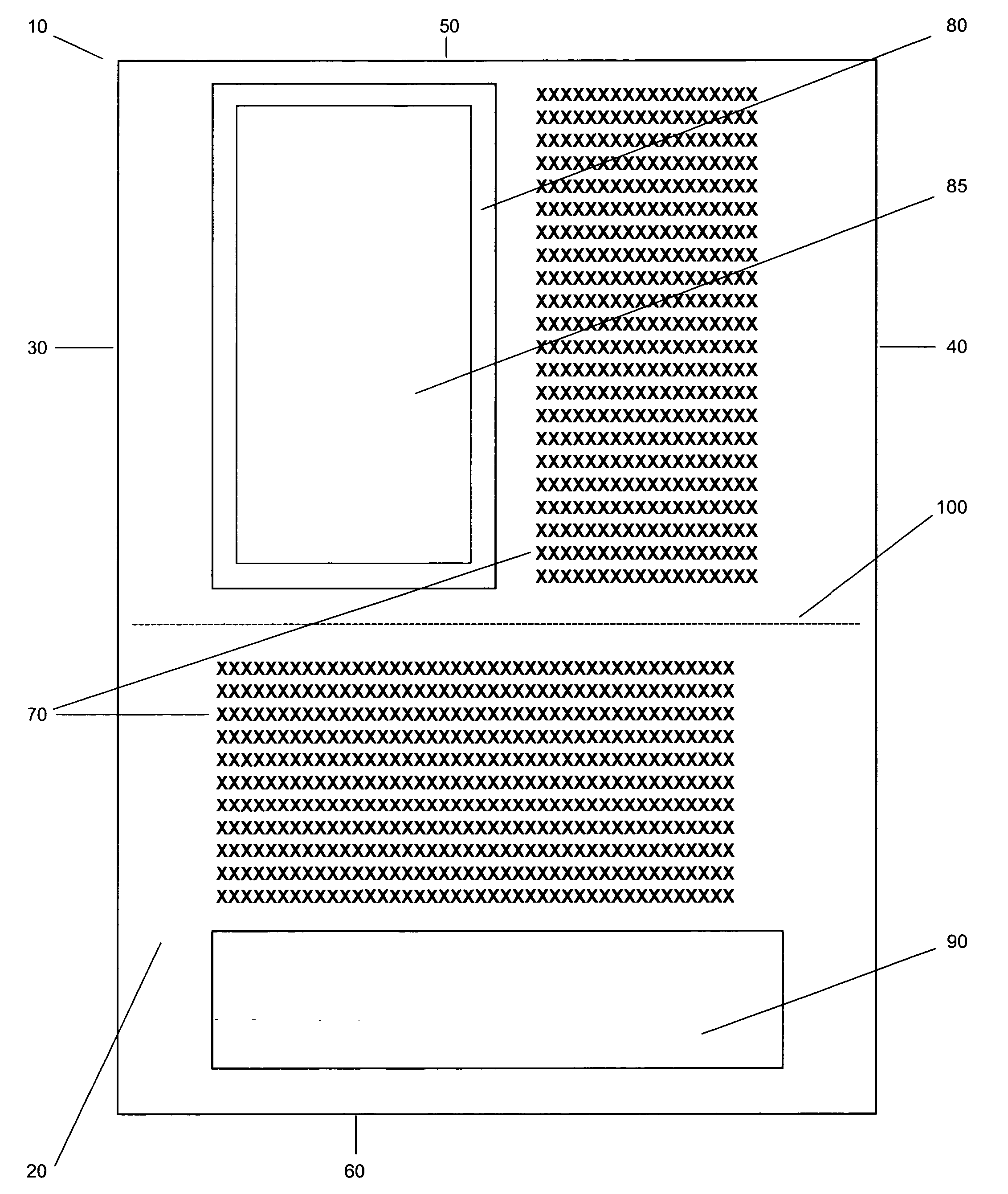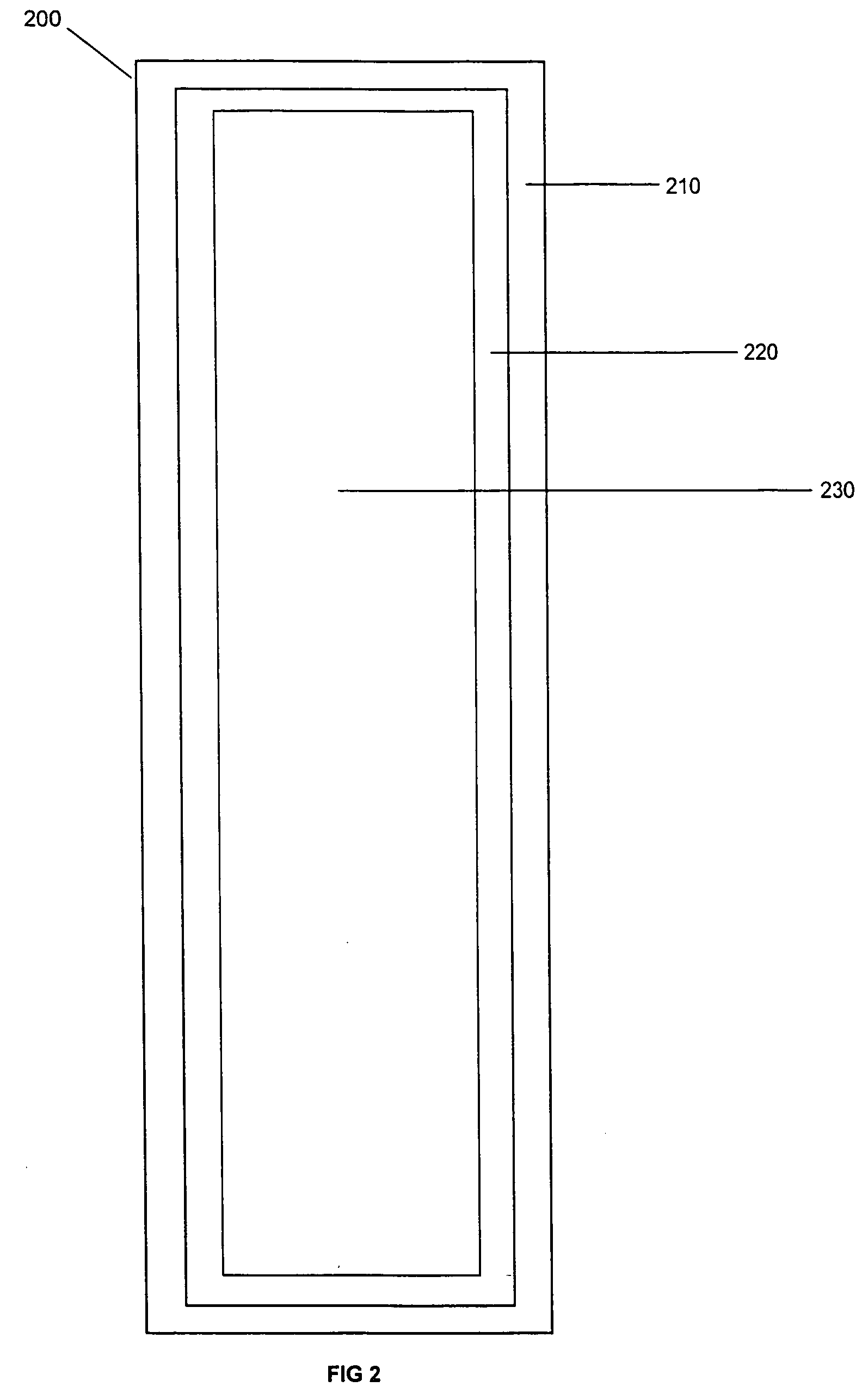Label, or business form/label combination having multiple layered or patterned coated adhesives and methods of making same
- Summary
- Abstract
- Description
- Claims
- Application Information
AI Technical Summary
Benefits of technology
Problems solved by technology
Method used
Image
Examples
Embodiment Construction
[0038] The present invention is now illustrated in greater detail by way of the following detailed description, but it should be understood that the present invention is not to be construed as being limited thereto.
[0039] The present invention with its unique characteristics can be used in a variety of harsh environments and applied to discontinuous textured surfaces, such as tires, rubber hoses, floor mats, wood, concrete, manhole covers, corrugated pieces, automotive batteries, metal, burlap, furniture, steel, discontinuous and roughened surfaces and other high / low surface energy materials.
[0040] Unexpectedly, the multiple layers, thicknesses, or patterned coat weights of adhesive of the present invention allows the label product to withstand dirty, dusty, oily, contaminated environments, and the like, and be adhered to discontinuous and uneven surfaces, due to the use of plural adhesives either in type or variety or in application of coat weights or thicknesses. In addition the...
PUM
 Login to View More
Login to View More Abstract
Description
Claims
Application Information
 Login to View More
Login to View More - R&D
- Intellectual Property
- Life Sciences
- Materials
- Tech Scout
- Unparalleled Data Quality
- Higher Quality Content
- 60% Fewer Hallucinations
Browse by: Latest US Patents, China's latest patents, Technical Efficacy Thesaurus, Application Domain, Technology Topic, Popular Technical Reports.
© 2025 PatSnap. All rights reserved.Legal|Privacy policy|Modern Slavery Act Transparency Statement|Sitemap|About US| Contact US: help@patsnap.com



